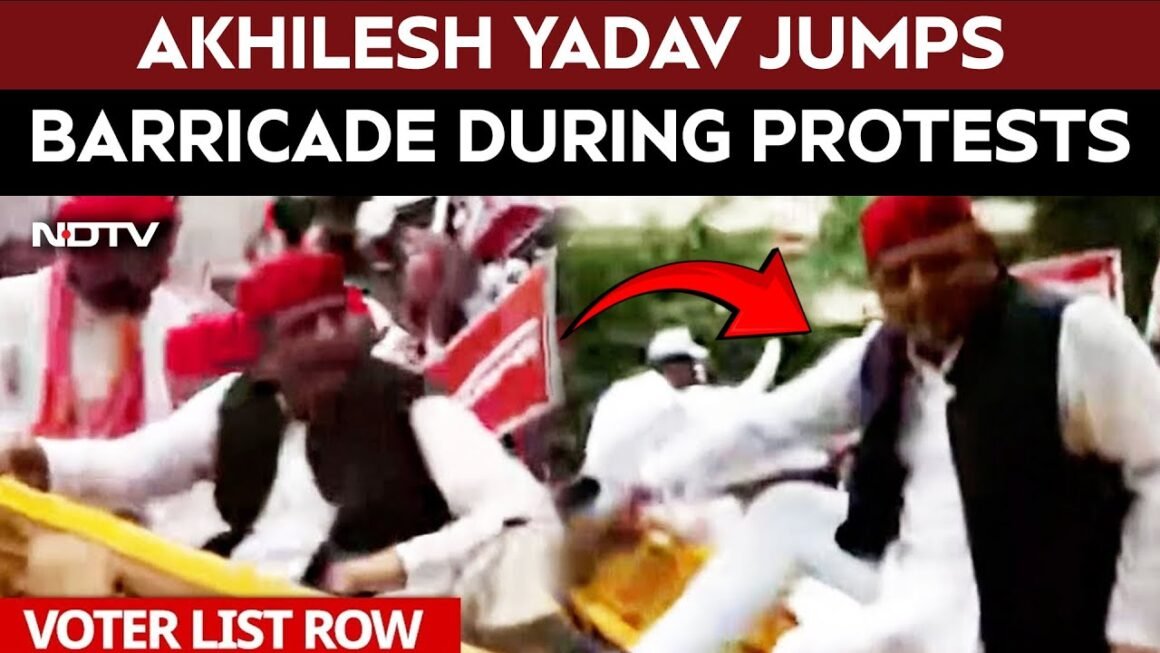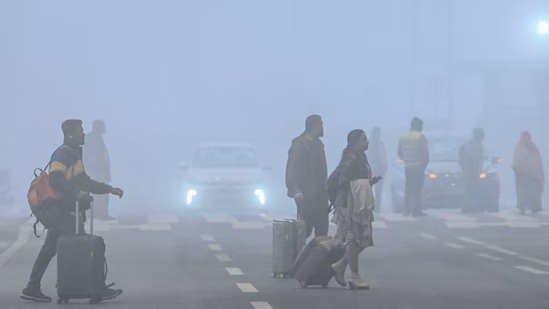
When Indian democracy hit the streets: Akhilesh Yadav vaults a police barricade, Rahul Gandhi is detained, and the INDIA bloc turns a protest over Bihar’s voter-roll revamp into a high-voltage showdown with the Modi regime. Is it a constitutional crusade—or the most dramatic act of political theatre before Bihar’s elections?
What unfurled on that intense August afternoon, and why should we care?
On August 11, 2025, more than 300 INDIA bloc MPs gathered at Parliament’s Makar Dwar to march toward the Election Commission of India (ECI). Their cause: halting the controversial Special Intensive Revision (SIR) of Bihar’s electoral rolls. Opposition leaders charge this revision, done only months ahead of the November Assembly elections, may rob lakhs of marginalized citizens—migrant workers, Dalits, Adivasis, and Muslims—of their voting rights.
The standoff worsened after Delhi Police barricaded the march with several steel barricades, and only a few MPs were able to go through. That’s when Samajwadi Party leader Akhilesh Yadav jumped over one of the barricades in broad daylight—a picture that quickly went viral. At the same time, Rahul Gandhi, Priyanka Gandhi Vadra, and other party leaders were also arrested and bundled off in police vans before being released later.
Why a Bureaucratic Voter Roll Revision in Bihar Has Exploded into a Nationwide Political Storm
The SIR is more than a technical update; in Bihar’s volatile political climate, it’s a game-changer.
In the 2020 Assembly elections, 54 out of 243 seats were decided by margins of less than 5,000 votes. Even minor changes to the voter list could alter the outcome. The EC’s new rules demand documents like passports or birth certificates while rejecting common IDs like Aadhaar, voter cards, and ration cards—making it nearly impossible for many rural and migrant voters to qualify. CPI(ML) leader Dipankar Bhattacharya called it “daylight robbery”, citing reports of 6.5 million voters already removed.
The EC defends the SIR as a constitutional process to remove duplicates and deceased entries while adding new young voters. BJP leaders, including Amit Shah, back the revision, calling it essential for “free and fair elections.”
From Steel Barricades to Symbolic Resistance: How Detentions and Defiance Became the Heart of the Showdown
For Akhilesh Yadav, the barricade wasn’t just a hurdle—it was a metaphor. “They are using police to stop us,” he declared after the leap.
Rahul Gandhi’s post-detention statement framed it as a fight for constitutional values:
“This fight is to save the Constitution… for One Man, One Vote.”
Priyanka Gandhi went further:
“They are scared; the government is cowardly.”
The protest reverberated into Parliament, with both Houses facing adjournments as the INDIA bloc MPs demanded urgent debate on the SIR issue.
India Reacts: From Viral Hashtags to Roaring Street Chants, the Leap That Divided the Nation in Real Time
The barricade jump not only hit the headlines—it lit India’s political web on fire. Tweets with hashtags such as #AkhileshLeap, #VoteChori, and #LoktantraBachao started trending within minutes, and TV anchors kept repeating the moment in slow motion, again and again.
This was no longer a silent protest. It was a national discussion, dividing timelines between admiration, sarcasm, and full-throated political fights.
What the Internet Said: The One-Liners, Hashtags, and Snaps That Drove the Conversation
- @DeshKiAwaaz: “One leap over steel and barbed wire, and Akhilesh Yadav just made the SIR a kitchen table topic.”
- @Justice4All: “Barricades can block bodies, not democracy.”
- @BiharWatch: “54 seats in 2020 decided by <5k votes. Now imagine what deleting lakhs of voters can do.”
- @RightWingReply: “If the EC is wrong, take it to court. Don’t turn Parliament Road into a circus.”
- @YoungVoterPatna: “I’m 19, and my name isn’t on the list. Don’t tell me this is routine.”
On the Streets of the Capital: Slogans, Symbols, and Raw Emotion That Turned a Protest into a Movement
Away from Twitter, the streets around Parliament echoed with “Loktantra Bachao!” as protestors waved party flags, clutched hand-written placards, and defiantly sported red Samajwadi caps and black armbands.
Some women MPs climbed barricades alongside male colleagues, while college students in the crowd held up signs reading “My Vote, My Voice” and “EC, Don’t Erase Us.”
Journalists described the air as “equal parts street theatre and constitutional battle”—with the visuals designed for both TV headlines and voter memory
Why This Day Was Part Fierce Democratic Battle and Part Carefully Orchestrated Political Theatre
This was not an impulsive move—it was a calculated moment of political theatre.
The INDIA bloc knew they were unlikely to change EC policy in one march. The real aim was to dominate the news cycle, rally their voter base, and visually project a unified front against the BJP.
By staging a high-energy street protest, complete with detentions and a headline-making stunt, the bloc forced the conversation away from the BJP’s policy agenda and onto the question of whether India’s democratic institutions are truly impartial.
The Road Ahead: How This Confrontation Could Shape Bihar’s Election and the National Political Climate
- Election Commission pressure — potential easing of documentation norms or suspension of the SIR.
- Bihar mobilization — district-level protests, social media campaigns, and voter awareness drives.
- Parliamentary battles — prolonged disruptions over electoral fairness.
- BJP’s counter-narrative — portraying the protest as anarchy disguised as activism.
- Beyond the Barricade: Why One Leap Could Become the Defining Political Image of 2025
In today’s India, where political imagery often outweighs policy detail, Akhilesh Yadav’s barricade jump may be remembered as one of the defining visuals of 2025. For supporters, it’s a picture of resistance. For critics, it’s just choreography.
Whether it changes the course of Bihar’s elections depends not on that leap alone—but on what comes after. Still, for one charged afternoon, the INDIA bloc managed to turn a bureaucratic voter list revision into the nation’s most-watched political drama.
FOR MORE BLOGS – beyondthepunchlines.com

 Add to favorites
Add to favorites








